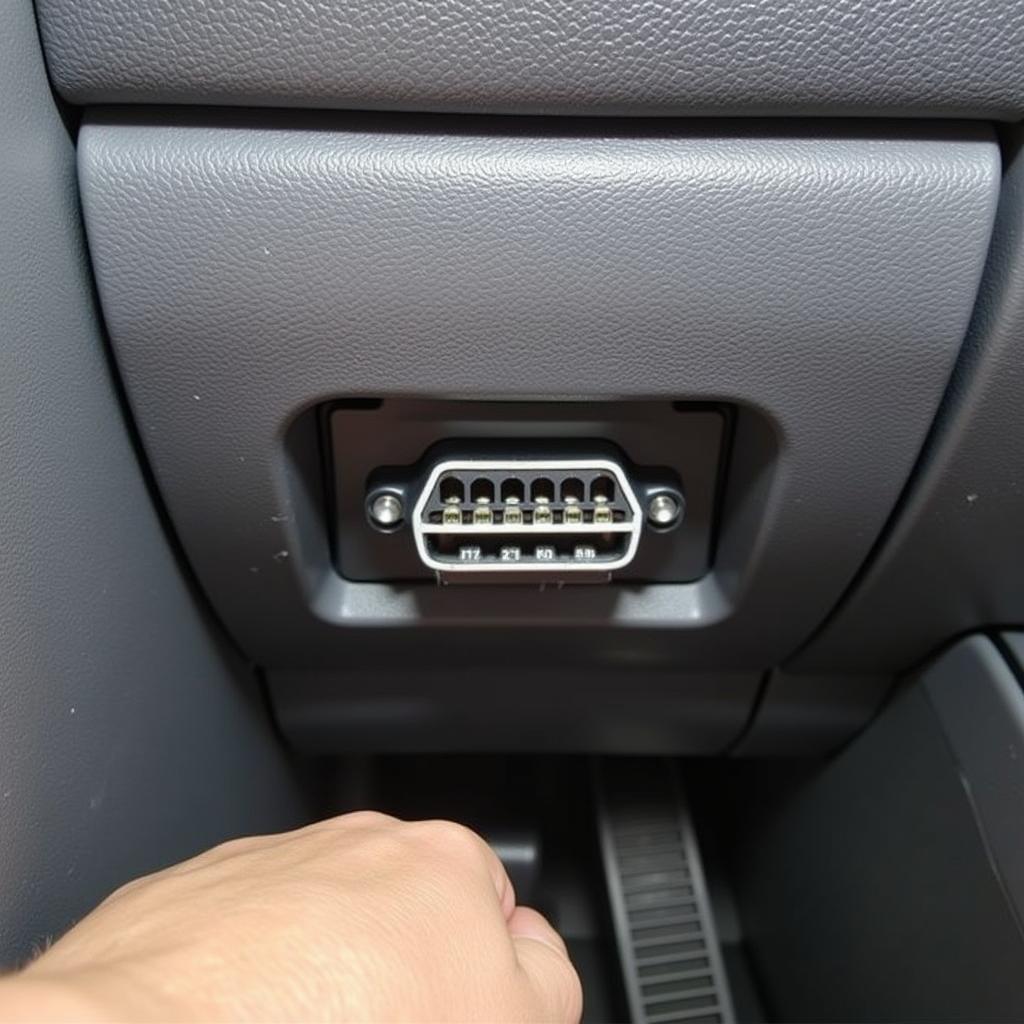When your car starts talking, it’s crucial to understand what it’s saying. One of the most important ways your car communicates is through its dashboard warning lights, especially the ones related to your brakes. These lights are color-coded to quickly convey the urgency of the situation. But what colors are brake warning lights, and what do they mean?
This comprehensive guide will demystify your car’s brake warning lights, helping you stay safe on the road.
The Universal Language of Color: Decoding Brake Warning Lights
While specific symbols might vary slightly between car manufacturers, the colors used for brake warning lights are generally standardized for universal understanding.
Red Brake Warning Light: Stop Immediately
A red brake warning light is the most serious. It indicates a critical issue with your braking system requiring immediate attention.
Possible reasons for a red brake warning light:
- The parking brake is engaged.
- Brake fluid is dangerously low.
- A serious hydraulic failure within the brake system.
What to do:
- Pull over safely and immediately. Continuing to drive with a red brake warning light is incredibly dangerous.
- Check your parking brake. If it’s engaged, release it. If the light turns off, you’re good to go.
- Check your brake fluid level. If it’s low, adding brake fluid might temporarily solve the issue, but you’ll need to get it inspected for leaks.
- Call a tow truck. If the light remains on, your brakes require immediate professional attention.
 Red Brake Warning Light on Dashboard
Red Brake Warning Light on Dashboard
Yellow or Orange Brake Warning Light: Proceed with Caution
A yellow or orange brake warning light signals a less urgent but still important issue. It indicates a potential problem that needs addressing soon.
Possible reasons for a yellow/orange brake warning light:
- The Anti-lock Braking System (ABS) or Electronic Stability Control (ESC) might have a malfunction.
- Brake pads are wearing thin and need replacement soon.
What to do:
- Drive cautiously to a safe location. While not as critical as a red light, a yellow/orange light shouldn’t be ignored.
- Avoid hard braking or sudden maneuvers.
- Schedule an appointment with a mechanic. Have your braking system diagnosed and repaired as soon as possible.
 Yellow Brake Warning Light Displayed on Car's Dashboard
Yellow Brake Warning Light Displayed on Car's Dashboard
Beyond the Colors: Other Brake-Related Warning Signs
Besides the color-coded warning lights, your car might communicate brake problems through:
- A soft or spongy brake pedal: This could indicate air in the brake lines, a leak in the braking system, or a failing master cylinder.
- Grinding or squealing noises when braking: This is a common sign of worn-out brake pads.
- The car pulling to one side when braking: This could be caused by uneven brake pad wear, a stuck caliper, or a problem with the hydraulic system.
Brake Warning Lights: Your Safety Net
Remember, brake warning lights are there for your safety. They are not suggestions; they are critical alerts demanding your immediate attention. Timely action can prevent accidents, save you costly repairs, and most importantly, protect you and your passengers on the road.
FAQs About Brake Warning Lights
1. Can I drive with the parking brake on?
While you can technically drive with the parking brake slightly engaged, it’s not recommended. It will cause premature wear and tear on your brakes and could lead to overheating and potential brake failure.
lexusrx300 brake light warning bell
2. What should I do if my brake warning light flashes on and off intermittently?
Intermittent warning lights can be tricky. It’s best to err on the side of caution and get your car checked by a mechanic to diagnose the root cause.
3. How often should I get my brakes checked?
It’s recommended to have your brakes inspected at least once a year or every 12,000 miles. However, if you notice any unusual sounds or sensations while braking, don’t wait for a scheduled appointment—get your car checked immediately.
chevrolet uplander brake fluid level warning indicator replacement
4. What is the difference between ABS and regular brakes?
ABS prevents wheel lock-up during hard braking, allowing you to maintain steering control. However, ABS doesn’t necessarily shorten braking distances.
nova brake warning lights not working
5. Can I add brake fluid myself?
Yes, you can temporarily add brake fluid to your car if it’s low. However, it’s crucial to use the correct type of brake fluid recommended for your vehicle and address the underlying cause of the leak.
48 emergency warning light bar with brake signal and running
6. How much does it cost to fix brake problems?
The cost of brake repairs can vary widely depending on the severity of the problem and the make and model of your car.
7. What should I do if my brakes fail completely?
If your brakes fail, don’t panic. Downshift to a lower gear, pump the brake pedal repeatedly, and slowly engage the parking brake while looking for a safe place to pull over.


